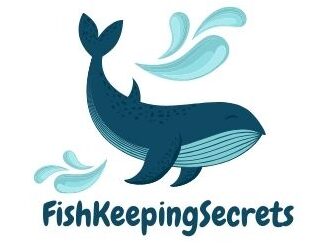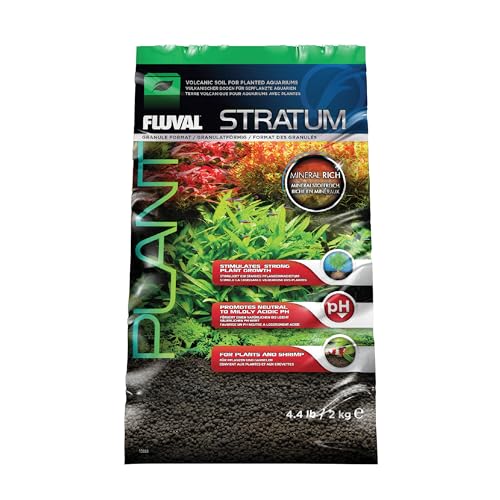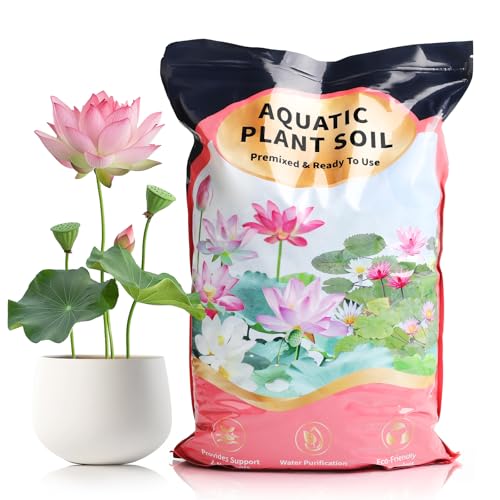10 Best Soils For Aquarium [2025]
This post contains affiliate links. As an Amazon Associate, we earn from qualifying purchases.
Finding the best soils for aquarium can be a daunting task, especially with the myriad of options available on the market today. Navigating through various brands and types can lead to confusion and frustration if you attempt to do it alone. To simplify your decision-making process, we have meticulously shortlisted 10 top products based on factors such as nutrient content, compatibility with different aquatic life, and user reviews. Our curated list is designed to save you time and hassle, ensuring that you can create a thriving underwater environment with ease.
Top 10 Soils For Aquarium In The Market
Soils For Aquarium Review
- Promotes Robust Plant Growth: This aquatic soil helps enrich plant development and fosters vigorous growth with vibrant coloration, ensuring your aquarium thrives with lush foliage
- Activates Beneficial Water Conditions: Infused with dormant nitrifying organisms, our aqua soil activates upon contact with water, swiftly breaking down waste and initiating the nitrogen cycle for a balanced aquatic ecosystem
- Stabilizes Water Conditions: Rapidly reducing ammonia levels, Fluval soil helps stabilize water conditions in new aquariums, ensuring a healthy environment for your aquatic inhabitants
- Enhances Root Penetration: Featuring lightweight 1 mm powder granules, our non-compacting substrate allows delicate roots to effortlessly penetrate and spread, promoting optimal plant growth
- Improves Water Quality: Porous granules facilitate extensive bacterial colonization, serving as an additional biological filtration source, while a potent blend of nutrients and minerals ensures improved water quality for your aquarium ecosystem
- Available in 5-pound bag
- Great option for a variety of freshwater plants, shrimp, snails and tropical fish
- Promotes growth of a wide variety of freshwater plants
- Made from clay based material, which is great for aquascaping
- This clay substrate is spherical by design, maintaining shape and structure over time
- Promotes Robust Plant Growth: Stratum fosters vigorous plant development by facilitating easy root penetration and nutrient absorption, aiding in the acquisition of vital nutrients essential for growth
- Facilitates Rapid and Beneficial Colonization: Its porous structure enables swift colonization of beneficial nitrifying organisms, fostering a healthy aquatic environment crucial for the well-being of aquarium inhabitants
- Maintains Optimal pH Levels: Designed to sustain a neutral to slightly acidic pH range, ideal for supporting the growth of various plants, tropical fish, and shrimp commonly found in planted aquarium setups
- Offers Shelter for Newborn Shrimp: Stratum provides a safe haven for newborn shrimp, offering protection from potential predators until they reach a size where emerging into the main aquarium is viable
- Preserves Water Quality: Ensures water clarity by preventing discoloration and effectively manages organic discoloration, especially in the presence of natural driftwood, while being specifically formulated for use in freshwater aquariums
- Facilitates Rapid and Beneficial Colonization: Its porous structure enables swift colonization of beneficial nitrifying organisms, fostering a healthy aquatic environment crucial for the well-being of aquarium inhabitants
- Maintains Optimal pH Levels: Designed to sustain a neutral to slightly acidic pH range, ideal for supporting the growth of various plants, tropical fish, and shrimp commonly found in planted aquarium setups
- Offers Shelter for Newborn Shrimp: Stratum provides a safe haven for newborn shrimp, offering protection from potential predators until they reach a size where emerging into the main aquarium is viable
- Preserves Water Quality: Ensures water clarity by preventing discoloration and effectively manages organic discoloration, especially in the presence of natural driftwood, while being specifically formulated for use in freshwater aquariums
- 4.4 lb bag
- 【Professional Aquatic Soil】: Crafted with a scientifically - formulated 100% all - natural soil mixture, this aquatic soil is specifically designed for aquatic plants, providing scientific care for various aquatic species
- 【Promote Ecological Balance】: Support microbial activities in the soil, creating a healthy and stable growth environment for aquatic plants
- 【All - Scenario Compatibility】: Whether it's for lotus pond landscaping, aquarium substrate, hydroponic vegetable gardens, or rainforest terrariums, this clay soil for lotus plant and aquatic soil is a perfect fit
- 【Easy to Operate】: Suitable for both beginners and experts, it allows you to easily fix aquatic plants and lotus roots, offering a hassle - free planting experience
- 【Long - Term Nutrient Release】: With the feature of long - term slow - release nutrients, there's no need to frequently replace the soil, making plant maintenance more worry - free
- Maintains Optimal pH Levels: Hygger CO2 new aquarium soil is scientifically formulated to maintain a stable pH of 6.5-7.5, creating the perfect environment for sensitive shrimp and aquatic plants without fluctuations. Ideal for supporting vibrant plant growth and healthy tropical shrimp in planted aquariums.
- Designed For Planted Aquariums:This product is harmless to fish and aquatic plants, we recommend daily water changes for the first every 3-5 days after setup 【minimum 3 changes before adding livestock】Avoid direct addition to established tanks, as initial nutrient release may temporarily affect sensitive species.
- Facilitates Rapid Bio-Colonization: The porous sintered soil structure promotes fast colonization of beneficial bacteria while naturally acidifying and softening water - creating ideal conditions for aquatic plants and stable water quality.
- Preserves Water Quality: The texture of aquatic plant soil is fine and not easy to scatter while naturally buffering water to a slightly acidic pH and reducing hardness - creating the optimal nutrient-rich environment for aquatic plants. An ideal choice for professional aquascaping.
- Warm Tips: Aquarium soil should be directly poured into the fish tank for use, and must not be rinsed with water! Washing the aquarium soil may rinse away the beneficial microorganisms in the aqua soil and could also cause it to break down into mud, making it dirtier the more you wash it ( Slowly add water to the fish tank )
- 【Optimal Nutrient Balance】Our aquatic plant soil is enriched with a precise blend of nutrients essential for vibrant growth, ensuring your water plants thrive and flourish.
- 【Enhanced Stability】Formulated with high-quality materials that provide excellent stability, our soil keeps aquatic plants securely anchored, even in flowing water conditions.
- 【Superior Water Retention】Designed with superior water retention capabilities, our soil maintains the perfect moisture levels needed by aquatic plants while preventing root rot.
- 【Environmental Friendliness】Made from eco-friendly materials, our aquatic plant soil supports sustainable gardening practices and is safe for all types of water bodies, including ponds and aquariums.
- 【Supports Microbial Activity】Rich in beneficial microbes, our soil fosters a healthy aquatic environment by supporting microbial activity that aids in nutrient cycling and water quality maintenance.
- 【Made by Nature】Made from specially processed natural material from the earth, Ideal natural planted aquarium substrate for most aquatic plants, provides healthy plant root system and for shrimps requiring softer water.
- 【For Healthy System】Developed for cultivation of aquatics plants and is also suitable substrate for shrimps. It provides fundamental minerals and trace elements, rich in organic acids and nitrogen nutrients, which promote the health and growth of shrimps straturm.
- 【 High-Quality Effect】Its porous structure creates an attractive and stable breeding ground for beneficial bacteria that keep your aquarium water clean. This product can reproduce the mildly acidic water conditions most aquatic plants prefer and can also extend and slow the release of the fertilizer needed for aquatic plants. Note: For stable ammonia levels, frequent partial water changes are advised in the first two weeks. Water conditions generally stabilize after one week.
- 【Safe to Use】This product is ready-to-use and does not require rinsing. To install, place a bowl or plastic bag in the aquarium and gently add water, allowing it to overflow softly onto the gravel bed. Any initial cloudiness will dissipate quickly as the filter system operates. While this product has rigorous testing and is proven to be safe for fish and aquatic plants, we recommend waiting at least one week before introducing any fish or shrimp for optimal safety.
- 【Ideal Size】Black Color, Normal 3-5mm grain size, Volume 5L Per Bag, Approximate weight 10 lbs , In general, the average thickness of aquarium soil laid ranges in 6-8cm; specific cases can be referred to this usage amount to determine how much you need for your system.
- Made with rare Japanese plant-based black soil and includes a bag of Amazon concentrate supplement separately
- The Amazon concentrate supplement enables local enhancements of organic components and essential elements that accommodate different layout patterns with various types of aquatic plants
- Helps to naturally buffer and lowers the pH level and hardness of the water to an ideal level for most aquatic plants
- Composed of granules of size and density ideal for the fast development of healthy plant root systems. Granules have a natural irregular shape that produces a natural look
- Ideal and easy to handle for beginners seeking to make a beautiful fully planted aquarium with crystal clear water
Our Review Process
To ensure you get reliable product recommendations, we follow a detailed review methodology that includes:
- Market Research: Scanning best-selling and trending products in this category.
- User Feedback: Reviewing customer reviews, star ratings, and complaints.
- Hands-On Testing: Trying select products ourselves when feasible.
- Feature Comparison: Evaluating specs, durability, pricing, and safety.
- Expert Opinions: Consulting with niche experts or credible reviewers.
We independently select the top 10 options based on value, quality, and usability. To learn more, visit our detailed review process.
Key Considerations Before Buying Soils for Aquarium
1. Type of Aquarium
Before selecting soil for your aquarium, it’s crucial to consider the type of aquarium you are setting up. Freshwater aquariums, planted tanks, and saltwater tanks all have different requirements. For instance, planted tanks often benefit from nutrient-rich substrates, while saltwater aquariums may require a different setup to maintain water chemistry.
2. Plant Compatibility
If you plan to include live plants in your aquarium, the soil you choose must support their growth. Look for soils designed specifically for planted tanks, which contain nutrients such as nitrogen, phosphorus, and potassium. Additionally, consider the soil’s grain size and structure, as it should allow for good root development and provide stability for your plants.
3. Water Parameters
Different soils can affect the pH and hardness of the water in your aquarium. It’s important to choose a soil that will not drastically alter the existing water parameters, especially if you already have fish or other aquatic life. Conduct thorough research on how the soil interacts with water chemistry and choose one that aligns with the needs of your aquatic inhabitants.
4. Soil Composition
The composition of the soil is a vital factor to consider. Look for soils that contain beneficial materials such as clay, organic matter, or volcanic ash, as these can enhance nutrient retention and provide a healthier environment for aquatic life. Additionally, avoid soils with excessive amounts of heavy metals or contaminants that could harm your fish and plants.
5. Layering Techniques
Consider how you intend to layer your substrate. Some aquarists prefer a multi-layered approach, using a nutrient-rich bottom layer topped with a more inert substrate. This technique can optimize nutrient availability while providing a stable surface for plants. Think about your desired aesthetic and the needs of your plants and fish when planning your substrate layers.
6. Maintenance and Cleaning
Choosing a soil that is easy to maintain is another key consideration. Some soils can trap debris and waste, leading to poor water quality. Look for options that allow for easy cleaning and maintenance, as well as those that don’t compact easily to avoid limiting water flow and oxygenation in the substrate.
7. Brand Reputation and Reviews
It’s always a good idea to research different brands and read reviews from other aquarists. A reputable brand often indicates a quality product, and customer feedback can provide insight into the real-world performance of the soil. Pay attention to specific comments regarding ease of use, plant growth, and any issues related to water quality.
8. Price and Value
Lastly, consider your budget. Soils can vary widely in price, and while it’s tempting to go for the cheapest option, investing in high-quality soil can pay off in the long run. Evaluate the value you are getting for the price, taking into account factors such as longevity, nutrient availability, and the health of your aquarium ecosystem.
FAQs
What types of soil are best for aquariums?
The best types of soil for aquariums include specialized aquarium substrates, like nutrient-rich soil for planted tanks, and standard gravels for fish-only tanks. Common options include laterite, fluorite, and aquasoil, which provide essential nutrients for plant growth.
How do I prepare soil for my aquarium?
To prepare soil for your aquarium, rinse it thoroughly to remove any dust or debris before adding it to the tank. If using nutrient-rich soil, consider layering it with a gravel cap to prevent cloudiness and help maintain a clean appearance.
Can I use garden soil in my aquarium?
It is generally not recommended to use garden soil in aquariums, as it may contain pesticides, fertilizers, or harmful pathogens. If you want to use natural soil, make sure it is from a clean, chemical-free source and properly sterilized before use.
How much soil do I need for my aquarium?
The amount of soil needed depends on the tank size and the type of plants you plan to keep. A general guideline is to use 1-2 inches of substrate for most setups. For heavily planted tanks, you might want to increase this to 3-4 inches in some areas to promote healthy root growth.
Will soil affect water parameters?
Yes, soil can affect water parameters. Nutrient-rich soils can release compounds like ammonia and nitrates into the water, especially when first added. It’s essential to monitor the water parameters closely during the initial setup and perform regular water changes to maintain a healthy environment.
How do I maintain soil in my aquarium?
To maintain soil in your aquarium, avoid excessive stirring or disturbing the substrate during cleanings. Regularly trim plants and remove decaying organic matter to prevent the accumulation of waste. Additionally, consider using a gentle substrate vacuum during water changes to clean surface debris without disturbing the soil too much.
Can I use soil in a freshwater aquarium with fish?
Yes, you can use soil in a freshwater aquarium with fish, especially if it is suitable for planted tanks. Ensure that the soil is safe for the specific fish species you want to keep, as some may be sensitive to changes in water parameters or may dig into the substrate.
What is the difference between soil and gravel for aquariums?
Soil is usually nutrient-rich and designed to support plant growth, while gravel is a more inert substrate that provides stability and aesthetics. Soil can leach nutrients into the water, which is beneficial for plants, whereas gravel typically requires additional fertilization for plant health.
Is it necessary to use soil for a planted aquarium?
While it is not strictly necessary to use soil for a planted aquarium, it is highly beneficial. Soil provides essential nutrients and helps create a thriving environment for aquatic plants. Alternatively, you can use other substrates in combination with fertilizers if soil is not your preference.
How often should I replace the soil in my aquarium?
Soil in an aquarium does not need to be replaced frequently, but it may require replacement or topping off every few years due to degradation or depletion of nutrients. Monitor the health of your plants and substrate quality to determine when it might be time for a change.
The Bottom Line
In conclusion, selecting the best soil for your aquarium is crucial for creating a thriving aquatic environment. The ten products highlighted in this article have been carefully chosen based on a combination of factors, including nutrient content, ease of use, compatibility with various aquatic plants, and feedback from both experienced aquarists and beginners alike. Each of these soils offers unique benefits that cater to different types of aquarium setups, whether you are establishing a lush planted tank or a serene aquascape.
By following our curated list, you can simplify the decision-making process and ensure that you invest in high-quality substrates that will support the health and growth of your aquatic plants and inhabitants. With the right soil, you’re not only enhancing the aesthetic appeal of your aquarium but also fostering a balanced ecosystem that encourages biodiversity. We hope this guide empowers you to create a beautiful and thriving underwater world that you can enjoy for years to come.









